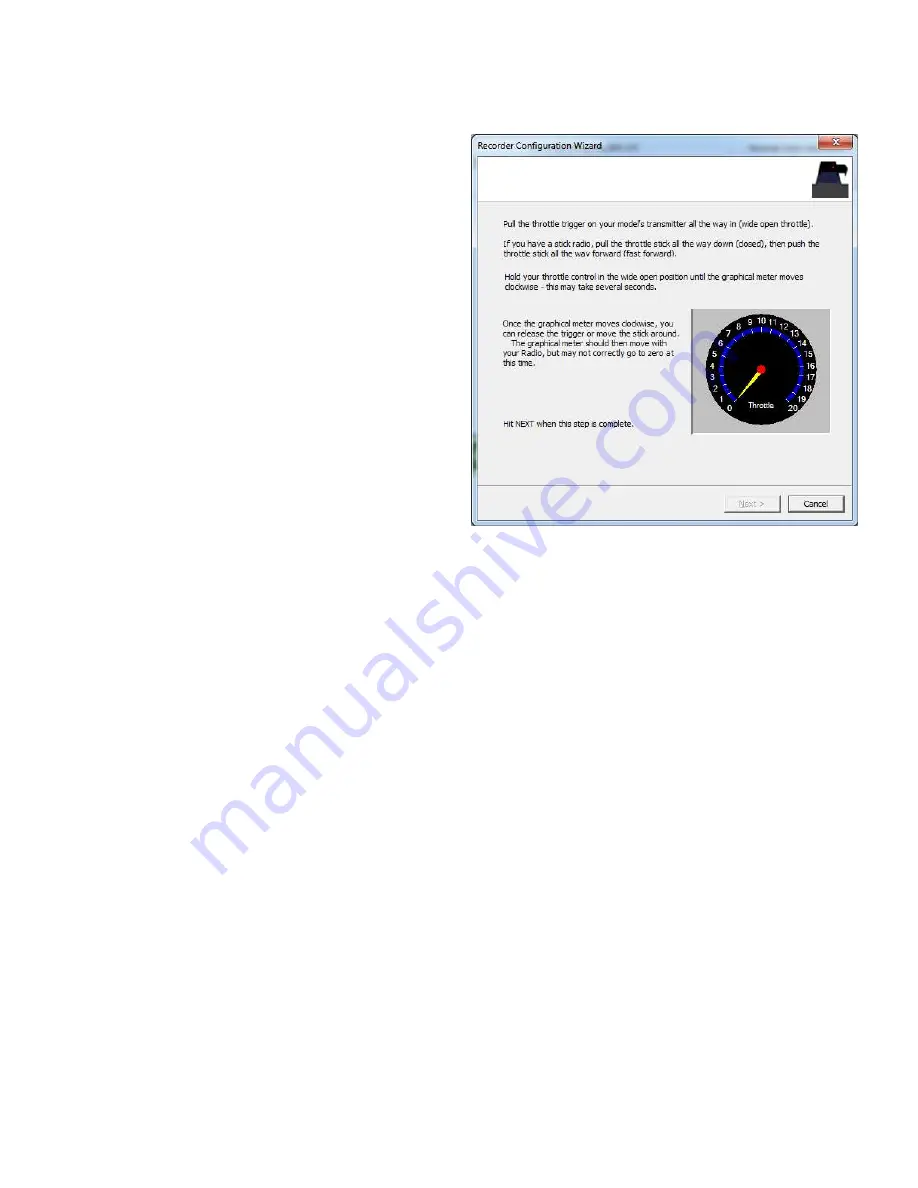
Copyright © 2003-2010 Eagle Tree Systems, LLC
Page 11
Configuring and Calibrating the Throttle Function of the
Expander with the Windows Software
Calibrating Throttle Movement
It is not absolutely necessary to calibrate the throttle function
when logging throttle servo position. The advantages of
calibration are that the throttle gauge and graphs will range from
zero (closed throttle) to approximately 20 (maximum throttle), as
you move your throttle between its extremes. If you do not
calibrate, the throttle gauge and graphs will still show throttle
movement, but the graph could be inverted if you have the throttle
servo reversed, and will not go from zero to 20.
To calibrate the throttle with your model, first connect the throttle
Y cable as described above, and connect the eLogger to your PC
via the USB cable. Then, click “Calibration, Calibrate Throttle.”
The Calibrate Throttle Wizard will then explain the calibration
procedure.
Using the eLogger
Once the eLogger and software is installed, it’s almost time to
have fun with it! Please read the important information below
on eLogger operation before using it at the field in your model.
It is extremely unlikely that the eLogger unit will affect your model’s radio range. But, as always after making an electronics change
to your model, it is very important that you range and function test your model once the eLogger is installed to ensure that there is no
impact on your system. Make sure that your “antenna down” operating range is within the manufacturer’s specifications. See your
Radio owner’s manual for the correct procedure for your equipment. DO NOT OPERATE IF YOUR MODEL DOESN’T PASS
THE ANTENNA DOWN RANGE CHECK.
Additionally, you need to make sure that your Model’s power system is working correctly after adding any new hardware in-line, like
the eLogger. This is especially critical in high amperage/voltage installations. It’s important that you safely run your model in an
extended stationary “bench” test, similar in duration and power usage to your most aggressive modeling, to ensure there are no
problems with any connections, etc. DO NOT OPERATE YOUR MODEL IF YOU HAVE PROBLEMS DURING THIS
EXTENDED STATIONARY TEST!
The eLogger’s LED
The eLogger’s LED indicates the device’s status. Note: sometimes the eLogger’s LED is hard to see from the top, but should be
visible from the side of the eLogger.
When the eLogger is powered up in your model, it will repeatedly flash a sequence of one, two or three flashes every second or so.
This flash rate is longer or shorter depending on the capture rate. This flashing indicates the following:
•
One Flash Sequence - The eLogger is actively recording. This is the normal power-up state.
•
Two Flash Sequence – The eLogger’s memory buffer is full, or you have enabled logging triggers and the logger is not yet
triggered.
•
Three Flash Sequence – The eLogger is connected to your PC’s USB connector, and has been recognized by the PC.
After Your Recording Session

















